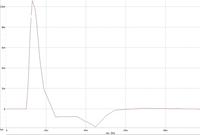aprilyne
Newbie level 6
hello!
I am having a hard time generating eye diagram for my Tranimpedance amplifier and limiting amplifier.
what should I do to generate eye diagram for my amplifiers?
I'm looking forward for your help.
I am having a hard time generating eye diagram for my Tranimpedance amplifier and limiting amplifier.
what should I do to generate eye diagram for my amplifiers?
I'm looking forward for your help.
